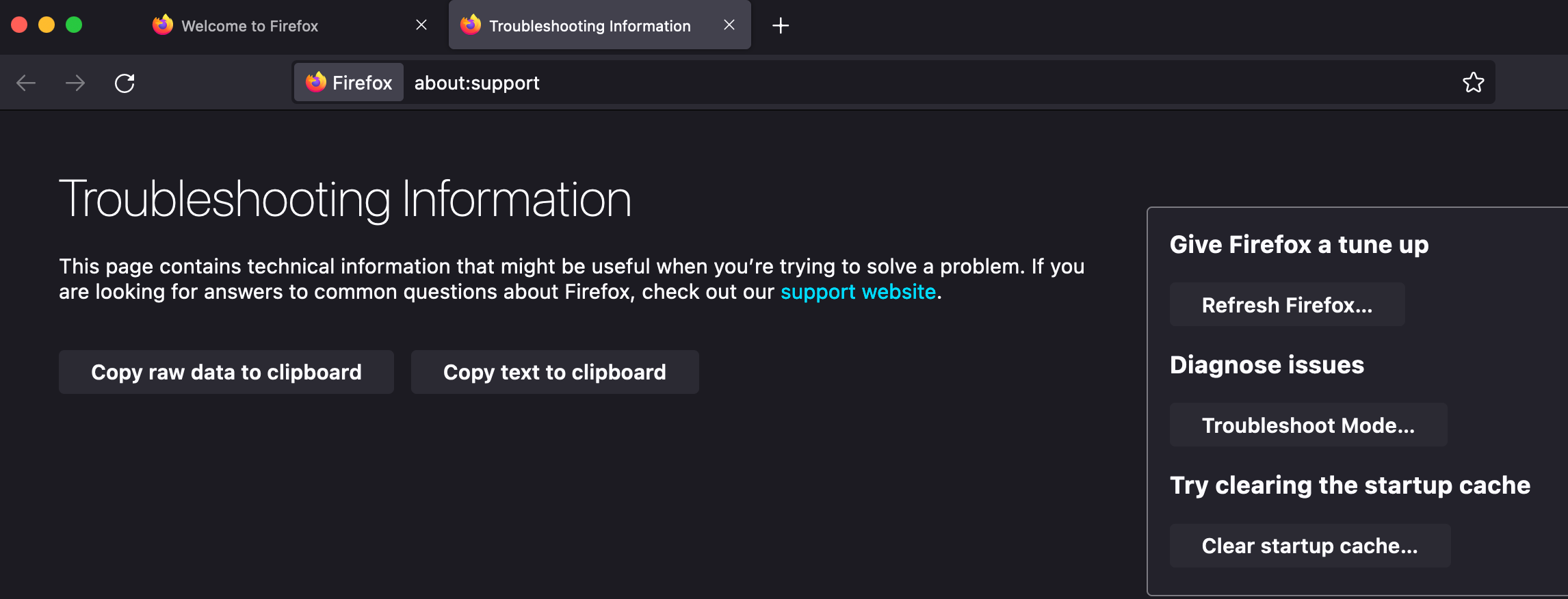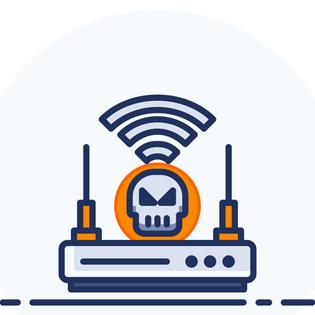Advertiser Disclosure
All About Cookies is an independent, advertising-supported website. Some of the offers that appear on this site are from third-party advertisers from which All About Cookies receives compensation. This compensation may impact how and where products appear on this site (including, for example, the order in which they appear).
All About Cookies does not include all financial or credit offers that might be available to consumers nor do we include all companies or all available products. Information is accurate as of the publishing date and has not been provided or endorsed by the advertiser.
Editorial Policy
The All About Cookies editorial team strives to provide accurate, in-depth information and reviews to help you, our reader, make online privacy decisions with confidence. Here's what you can expect from us:
- All About Cookies makes money when you click the links on our site to some of the products and offers that we mention. These partnerships do not influence our opinions or recommendations. Read more about how we make money.
- Partners are not able to review or request changes to our content except for compliance reasons.
- We aim to make sure everything on our site is up-to-date and accurate as of the publishing date, but we cannot guarantee we haven't missed something. It's your responsibility to double-check all information before making any decision. If you spot something that looks wrong, please let us know.
If you attempt to perform a web search in Chrome, Safari, Firefox, or another browser only to be redirected to Yahoo Search, then your Mac has unfortunately contracted the Yahoo Search redirect virus. Although Yahoo is a legitimate search engine, if you haven’t made it the default search homepage on your browsers, it likely means there’s a problem.
The Yahoo redirect virus is a form of malware which, in any scenario, is something you’ll want to rid from your computer with anti-malware software. Browser hijacker malware such as this may do anything from modifying your browser settings in ways you can’t see, to tracking your browsing history so hackers can collect data on your internet behavior, to redirecting you to sites that produce advertisement revenue for hackers.
In this article, we’ll explain more in-depth about the virus itself and how to rid your Mac of it across Chrome, Safari, and Firefox if your computer is infected.
-
All-in-one protection for your personal info and privacy
-
Excellent antivirus protection
-
Additional features like a file shredder and parental controls
-
Multiple pop-ups for text notifications can be annoying
How to get rid of the Yahoo Search redirect virus on a Mac
How to remove Yahoo Search as the default search engine
Yahoo Search redirect virus FAQs
Bottom line
What is the Yahoo Search redirect virus?
The Yahoo Search redirect virus is a browser hijacker rooted in malware that redirects your browser away from your intended site to search.yahoo.com. On the way to Yahoo search results, the computer virus may bring your browser through several other sites that generate revenue for the hacker.
All three of those web browsers default to Google as their search engine (yes, even Apple’s Safari), so any search you perform in any of them should produce results in Google.
Seeing results in Yahoo, despite the default settings of your browser, means your browser has been hijacked. That might not seem like the end of the world — perhaps even just a minor annoyance — but there are several reasons the Yahoo Search redirect virus might negatively affect your Mac.
Although this virus may not look or feel like a particularly malicious brand of malware, it has the potential to continuously interfere with your search engine use—and therefore your browsing history—which directly correlates to what kind and how many advertisements get thrown your way. You could experience an influx of ads because of this adware existing on your Mac.
The latter possibility also means that the virus could redirect your searches to sites that look like Yahoo but aren’t. They may be imposter search engines that provide manipulated results geared to get you to click on links that lead to sites from which the hackers generate ad revenue.
A browser hijacker can also install a "helper object" that could thwart your ability to access your browser's settings.
In more grievous instances, a browser hijacker such as the Yahoo Search redirect virus can potentially expose you to more malware or risk identity theft. Browser hijackers can collect your personal information, such as geolocation or IP addresses, which may lead hackers to discover some of your personally identifiable information.
It’s important to note that this virus is unrelated to Yahoo. You could have unwittingly contracted it by installing free software or extensions that could have come from several software vendors. Or maybe you clicked on something to remove a pop-up on a website, which triggered the infection.
It's easy for anyone to download a browser hijacker accidentally because they disguise themselves as useful tools, such as weather widgets, navigation software, unit converters, coupon providers, and more. The catch is, once you've opted into the software, it likely won't work and will have already infected your computer with the malware.
Being redirected to search.yahoo.com is of no value to you because you can choose to access that site for free. Even if you enjoy searching on Yahoo, the virus violates your privacy, exposes you to identity and financial risk, and should be removed from your Mac.
How to get rid of the Yahoo Search redirect virus on a Mac
Below is a step-by-step guide on how to remove the virus and reset your browsers to their default search engines.
1. Scan with antivirus software
You were likely hoping that getting rid of the virus would be as simple as clicking a few things to reset your browser, but it’s a bit more involved than that. The malware might have infected multiple folders on your computer, so it’s essential to begin by running a scan with antivirus or anti-malware software.
Antivirus software is important because it runs a thorough scan of your hard drive, examining every file and program for out-of-the-ordinary behavior. Leaving no stone unturned, it ensures your computer isn’t harboring malicious code that pops up later to perform some unsavory activity.
Some of the best antivirus programs for macOS include:
- TotalAV: TotalAV is easy to use and has a complete range of features that includes malware scans. Its scans are fast, and it offers some useful bonus features.
- McAfee+ Premium: McAfee is a long-standing antivirus program with a wide range of features and reliable scans for viruses and malware. You can select from several pricing tiers.
- Bitdefender: Bitdefender has a free version, but its premium antivirus software is best for Windows users who don’t mind paying a little extra for premium features. It offers cross-platform malware detection and customizable scans.
-
Norton 360 Antivirus: Norton offers excellent malware detection and real-time defense against malicious code. Norton also offers additional services like identity protection and a VPN.
Get Norton 360 Antivirus | Read our Norton 360 Antivirus review
- First, run an antivirus scan so the software can examine every file on your computer
- Next, remove the malicious files
- Run a second scan and restart your computer
- Finally, restore the settings on your web browser to Google search, Bing, or another preferred search engine
- Scan your computer using antivirus. This is important to ensure you detect and remove any bad files lingering on your hard drive.
- Remove any malicious files. Make sure you actually delete them instead of quarantining them.
- Perform a second antivirus scan. Don’t skip this step.
- Restart your computer. This prepares your computer for the final step.
- Reset your search engines. Step-by-step instructions for how to do this on Chrome, Safari, and Firefox are above.
2. Remove malicious programs
If your antivirus software discovers a problem, it will present you with options of how to proceed. You can quarantine the infected files, which means you opt for the antivirus software to move the files to a place where they simply can’t infect other files. The location is managed by the antivirus software.
Or you can delete the infected files, which rids your computer of the virus, but it has the potential to delete files that affect the operation of your computer. Still, this is your preferred option.
3. Run a second full scan
After you’ve removed the infected files, run an additional full scan with your antivirus program. This is an important step because it ensures no bad code leaked during the removal process and no other files were infected.
4. Restart your computer
Restarting your computer is a best practice after removing malicious files so you can proceed to fix your search engines and browsers.
How to remove Yahoo Search as the default search engine
Below are step-by-step instructions on how you can reset your default search engines in Chrome, Safari, and Firefox.
How to reset your search engine on Google Chrome
1. Open Chrome
2. Locate the three vertical gray dots in the top right of your browser. Click on the three dots to open the drop-down menu.
3. Navigate to “Settings”

4. Navigate to the left side of the Chrome settings menu where you see “Advanced.” Open that menu by clicking on the arrow.

5. Click “Reset settings”
6. Click “Restore settings to their original defaults”
7. Click “Reset settings” in the pop-up message:

How to reset your search engine on Safari
1. Open Safari
2. From the “Safari” menu, open “Preferences”
3. In your Safari preferences menu, select “Privacy” and click “Manage Website Data”

4. Select “Remove All”

5. Select “Remove Now”
6. Navigate to “Advanced” in your preferences window:

7. Select “Show Develop menu in menu bar”
8. Navigate to “Develop” at the top of your Safari menu, and select “Empty Caches”

How to reset your search engine on Firefox
1. Open Firefox
2. Navigate to the top right of the browser to find three horizontal lines. Click on those.
3. Select "Help"

4. Select "More troubleshooting information"
5. Select "Refresh Firefox" under "Give Firefox a tune up"

6. Select "Refresh Firefox" from the pop-up
Yahoo Search redirect virus FAQs
Below we answer some commonly asked questions about the Yahoo Search redirect virus on Mac.
Why does my Mac keep searching with Yahoo?
If you’re using Google Chrome, Safari, Firefox, or another browser on your Mac and your browser produces search results in Yahoo without your consent, your computer has likely been infected with the Yahoo Search redirect virus.
If you have not set your default search engine to be Yahoo, then your default search engine should be Google on all three browsers.
If you are constantly being redirected to Yahoo, take steps to rid your Mac of this virus that could track your browsing history, targeting you with spammy ads, and possibly stealing your personally identifiable information.
How do I stop Yahoo from hijacking my browser?
To get rid of the browser hijacker Yahoo Search redirect virus, there are a few simple steps you should take.
The details involved in these steps are described in-depth above.
How do I get rid of the Yahoo virus?
You can easily remove the Yahoo Search redirect virus from your Macbook by following a few steps.
Bottom line
The Yahoo Search redirect virus is more than just an annoying problem that redirects your searches to search.yahoo.com instead of Google.
It’s malware that might track what websites you visit, target you with illegitimate advertising, or even plan to steal information from you. It’s not associated with the Yahoo search engine itself, and you should follow the simple steps above to remove it from your computer.
The most important part of the instructions is to begin with running an antivirus scan.
If you skip this step, there will be no point in resetting your browsers. Antivirus software ensures that malicious files aren’t lying latent in your computer—ready to make themselves known in damaging ways when their code prompts them to.
And remember, always do a second scan after you’ve cleared the bad files from your computer in your first scan.
Although there is no specific way to ensure that your Mac avoids contracting the Yahoo Search redirect virus — other than researching tools and widgets before you download them — you can easily mitigate its negative effects by starting with the best antivirus programs.
-
All-in-one protection for your personal info and privacy
-
Excellent antivirus protection
-
Additional features like a file shredder and parental controls
-
Multiple pop-ups for text notifications can be annoying





